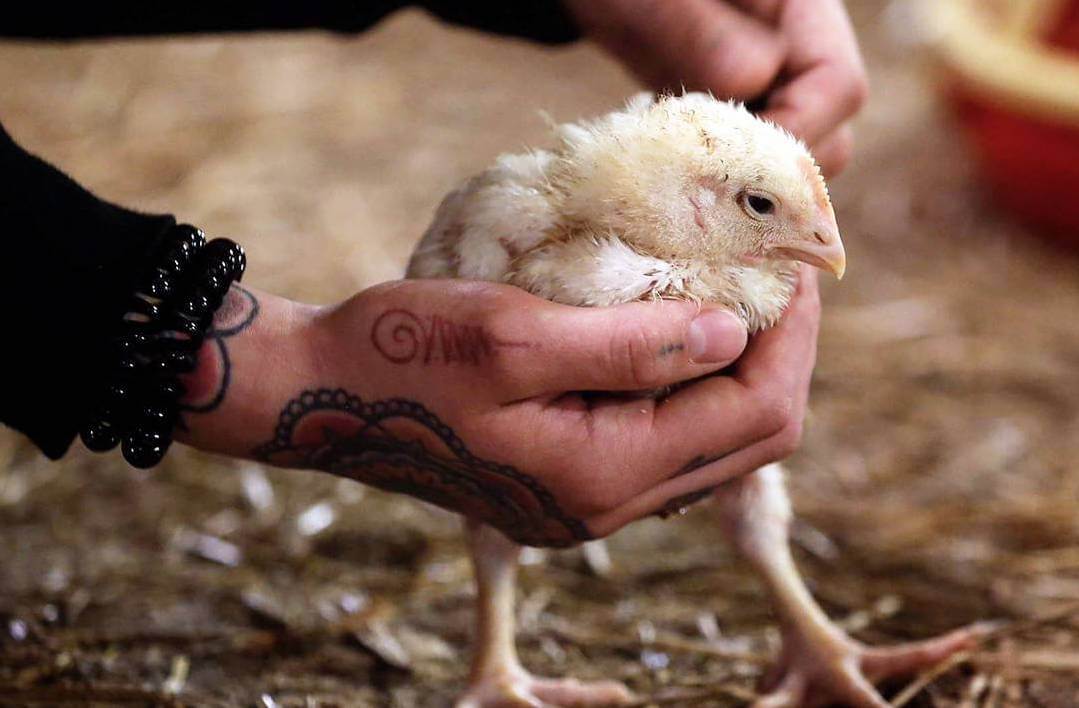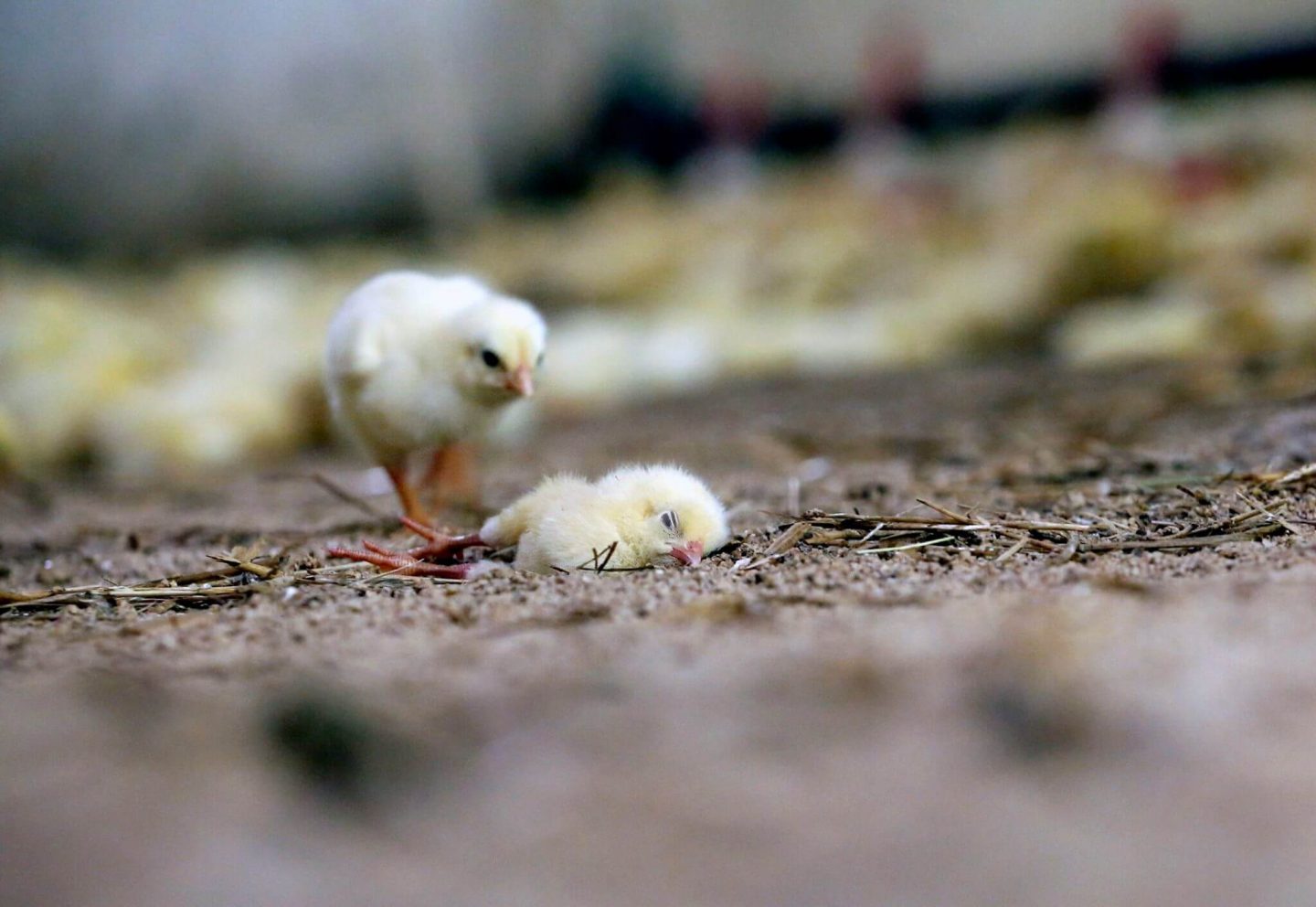What Percentage Of Animals Are Raised In Factory Farms Globally
According to a new analysis conducted by animal rights think tank Sentience Institute, effectually 99% of US farmed animals live on factory farms.
The new assay uses data from the 2017 USDA Census of Agriculture, which was released on April xi, 2019. The most contempo previous information available was for 2012, which showed around 98.66% of U.S. farmed animals lived on factory farms compared to the current figure of 98.74%. The analysis uses EPA regulations for what constitutes a Concentrated Animal Feeding Operation (CAFO) in combination with the USDA data on how many animals live on farms of various sizes.
"Most people are woefully incorrect about where their meat comes from. 75% of U.s.a. adults believe they commonly purchase humane products, yet only 1% of food animals live on not-factory farms," said Sentience Found's Executive Manager Kelly Witwicki in reference to a 2017 poll conducted by the group in collaboration with Ipsos Grouping.
A global analysis conducted past Sentience Institute suggests over xc% of farmed animals worldwide live on manufactory farms.
Medium-large factory farms, or CAFOs, in the U.S. generally consists of 1,000 beef cattle, 700 dairy cows, two,500 pigs, 55,000 turkeys, 30,000 egg-laying hens, or 125,000 broiler chickens.
The analysis notes that CAFO every bit defined by the EPA and what the public would call a manufactory farm are non necessarily the same. "For example, a subcontract with 37,500 chickens or 3,000 pigs is only considered a CAFO if information technology meets certain conditions regarding surface water pollution, but farms of these sizes that don't meet these atmospheric condition could still house animals in ways that would exist publicly regarded as crowded 'factory' conditions."
Researchers expanded the definition of CAFO in this analysis to include the following premises: (1) All big-sized farms, as defined by the EPA, are CAFOs, (ii) all medium-sized farms are CAFOs, and (iii) for birds, the largest three quarters of minor-sized farms are CAFOs, (four) for mammals, the largest half of small-sized farms are CAFOs, and (5) farms are evenly distributed amongst sizes within each range.
Co-ordinate to the latest Sentience Constitute analysis, the percent of U.S. farmed animals living on factory farms is…
- Broiler chickens (99.9%) live on factory farms
- Turkeys (99.8%) alive on factory farms
- Egg chickens (98.2%) live on manufacturing plant farms
- Pigs (98.3%) live on mill farms
- Cows (70.4%) alive on factory farms
Factory farmed animals are heavily concentrated in grower states like North Carolina, Iowa, Illinois, Nebraska, and Kansas, where the number of animals often exceeds the number of people in the almost heavily farmed counties.
Iowa's 4th Congressional Commune, which covers the northwest corner of the state, is home to more farmed animals than people—by a count of 13 one thousand thousand pigs and 37 meg layer hens to about 750,000 residents. That's approximately 17 pigs and 50 layer hens for every person in Northwest Iowa.
In North Carolina's Duplin and Sampson countries, most 82 1000000 chickens and turkeys are packed in among four 1000000 pigs. Both counties flooded during Hurricane Florence, covering the state in manure, contaminating the water supply, and posing a serious public health threat to residents nearby. The state spent $11 meg disposing of some three.4 million dead birds, left behind by farmers to drown during Hurricane Florence.
"Despite public outrage at the animal welfare and environmental consequences of factory farming, information technology is still the predominant system of fauna agriculture," said Witwicki. "The public has been able to button the manufacture to make some changes in the right direction, for instance by starting to move egg-laying hens out of cages, but we have unfortunately seen little change in the percentage of animals living in factory farms in recent years."
According to PEW Trusts, in 1950, more than one.6 one thousand thousand farms grew chickens for American consumers. By 2007, 98% of those farms were gone, even though Americans were eating more chicken. Broiler sales jumped by viii billion birds (i,400%) over the aforementioned time period.

These industrialized growing systems weren't just producing more chicken. With the help of feed additives, modernized processing plants, antibiotics, and rough condone for creature welfare, they were producing bigger chickens at a faster rate so they could sell them for less.
Over the course of just xl days, the chickens accomplish full size. This unnaturally fast growth wheel and lack of mobility have a toll on their bodies. Many develop lameness and as a result, they are in constant pain.
After the birds' accelerated growing period—which causes extreme amounts of stress on their bodies—they are sent to slaughter. Tyson Foods slaughters an average of 35 meg chickens per calendar week.
"Between the suffering of these animals and the devastating impacts of animal farming on our climate and on the sustainability of food system, this is a moral ending that we can't beget to neglect any longer," said Witwicki.
Around 95% of farmed animals globally are chickens and fish, and they generally endure the nearly intensive farming methods. The Nutrient and Agriculture System of the United Nations estimates 532,510,706 fish were raised on factory farms in the U.South. in 2017.
Over the past 10 years, global demand for chicken has steadily increased and with it, Europe's poultry production centers take get overrun with manufacturing plant farms. Although farms with more than v,000 broilers barely correspond 1% of the full number of broiler farms in the Eu, they account for more than 9 out of ten broiler chickens produced.
Seven Eu fellow member states produced nearly three-quarters of all EU poultry production. Poland continues to be the region's largest producer, representing 16.8% or v.6 billion pounds of EU craven in 2018. The UK is non far backside (12.ix%), and France (11.iv%), Spain (x.seven%), Germany (10.4%), and Italy (8.five%) brand up a sizable portion of the remaining chicken produced in the European union.
Inside chicken farms, birds live a gruesome life covered in feces, overcrowded and unable to walk, ofttimes with broken bones protruding from their wings. Many factory-farmed chickens never meet the lite of day.

"When consumers think about factory farming, they appear to accept psychological refuge in the idea of 'happy meat.' Consumers feel uncomfortable about eating factory farmed animals, so their minds justify animal product consumption by incorrectly bold that what they eat was produced ethically," said Witwicki.
"This illusion reduces the cognitive dissonance that results from caring virtually animals while eating them. The brute food industry has capitalized on this consequence with a strategy known equally humane-washing, which uses misleading advertising such every bit images of animals who expect much happier, healthier, and freer than in reality.
Fortunately, there is rapid growth in the establish-based foods sector as well as a nascent manufacture of then-chosen 'make clean meat,' existent meat fabricated from animal cells without animal slaughter, which could mean an end to factory farming inside my lifetime."
Source: https://sentientmedia.org/u-s-farmed-animals-live-on-factory-farms/
Posted by: gonzalezesifer88.blogspot.com

0 Response to "What Percentage Of Animals Are Raised In Factory Farms Globally"
Post a Comment